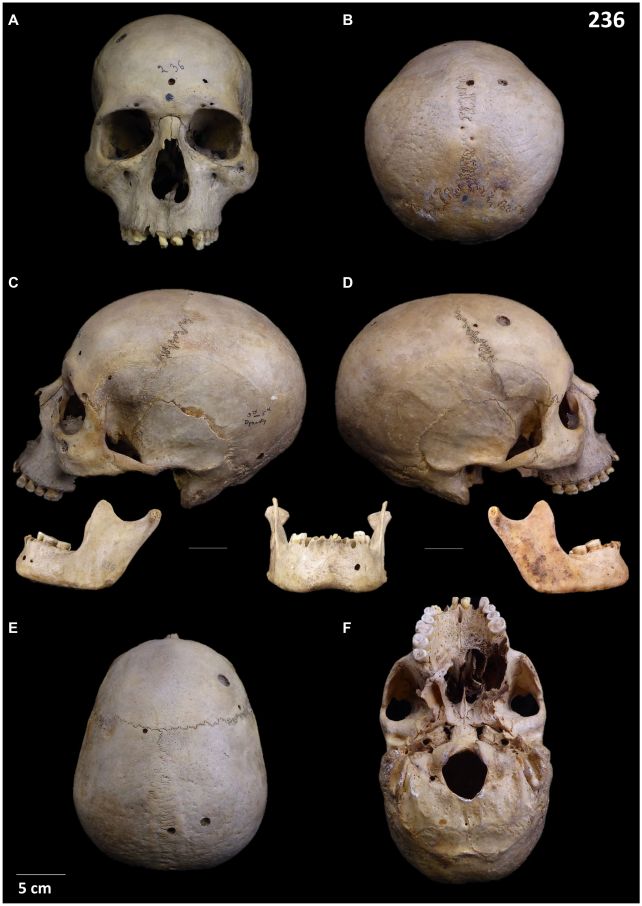An ancient Egyptian skull with small cuts found
- May 29, 2024
- 0
Ancient Egyptians were extremely skilled and advanced in medicine; They were so famous for their skills and knowledge that we still learn from them thousands of years later.
Ancient Egyptians were extremely skilled and advanced in medicine; They were so famous for their skills and knowledge that we still learn from them thousands of years later.

Ancient Egyptians were extremely skilled and advanced in medicine; They were so famous for their skills and knowledge that we still learn from them thousands of years later. However, there were some things that the Egyptians had difficulty coping with. One of these should come as no surprise, as it remains a major challenge even today. This is cancer, of course; It is the transformation of living tissue into something malignant and deadly.
However, we have new evidence that the ancient Egyptians did not treat cancer as inpatients. Two skulls, now in the Duckworth Collection at the University of Cambridge, show signs of cancer and other damage, as well as attempts to treat them.
“This finding is unique evidence of how ancient Egyptian medicine sought to combat or investigate cancer more than 4,000 years ago,” says paleopathologist Edgard Camaros of the University of Santiago de Compostela in Spain. “This is an extraordinary new perspective in our understanding of the history of medicine.”
Both skulls show signs of cancer, but after careful examination under a microscope and CT scan, each tells a very different story.

Skull number 236 belonged to a man who lived in ancient Egypt between 2687 and 2345 BC. He died in his early 30s, and his skull is riddled with approximately 30 lesions consistent with metastatic carcinoma, although there are other possible diagnoses.
Most of these lesions are relatively small, but there are also noticeably larger ones, including a dime-sized dimple carved out because the tissue has been destroyed by cancerous tissue or a tumor at the top of the man’s skull.
When researchers took a closer look at the damage, they noticed something extraordinary. The edges are cut with incisions, as if an ancient surgeon tried to remove the neoplasm with a metal tool. These cuts barely healed; which suggests that they appeared around the time of death; possibly forensically, possibly as a last resort, but almost certainly related to the man’s cancer.
“The ancient Egyptians appear to have performed some surgeries related to the presence of cancer cells,” says orthopedic surgeon Albert Isidro of Sagrat Kor University Hospital, “proving that ancient medicine did experimental treatments or medical research on cancer.”
Skull number E270 in the Duckworth collection, dated 3000 B.C. It belonged to a woman who lived between 663-343. She was in his 50s when he died, and his skull was filled with history. The first thing you may notice is the massive lesion that dominates the upper part of the skull, between the right frontal and parietal bones. Among other potential diagnoses, this lesion is compatible with osteosarcoma or meningioma.
But there are other scars on his skull that have healed. He has a major injury above his left eyebrow caused by a sharp blow. Investigators say someone hit him in the head with a sharp weapon. And a little further, on the left side of the top of the head – an injury caused by a blunt blow.
What makes these injuries really interesting is that they heal so well. We do not know whether these proceeded simultaneously or separately, but he survived both; It makes me think that he may be receiving treatment again. However, the fact that the wounds resemble a fight poses a complete conundrum for the female victim.
“Has this woman been involved in any conflict?” says archaeologist Tetiana Tondini of the University of Tübingen in Germany. “If so, we need to rethink the role of women in the past and how they actively participated in conflicts in ancient times.”
The massive cancerous lesion on the woman’s skull shows no signs of healing that we can confidently describe, unlike the man’s skull and previous injuries. Therefore, although the cause of death cannot be clearly determined in both patients, the advanced stage of cancer in both cases indicates a connection with death that cannot be ignored. Although a cure was attempted by the ancient Egyptians, a cure does not appear to have been found.
“We wanted to learn the role of cancer in the past, how common this disease was in antiquity, and how ancient societies interacted with this pathology,” says Tondini. “We find that although the ancient Egyptians were able to treat complex skull fractures, cancer is still at the frontier of medical knowledge.”
Source: Port Altele
As an experienced journalist and author, Mary has been reporting on the latest news and trends for over 5 years. With a passion for uncovering the stories behind the headlines, Mary has earned a reputation as a trusted voice in the world of journalism. Her writing style is insightful, engaging and thought-provoking, as she takes a deep dive into the most pressing issues of our time.